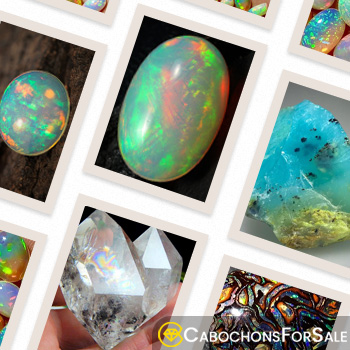The allure of Ethiopian opals is undeniable. Their play of color, unique patterns, and rich history make them one of the most prized gems in the world of jewelry. However, with beauty comes imitation, and spotting the difference between a genuine Ethiopian Opal vs. Lab-Created Opals one can feel like a daunting task.
But don’t worry—this guide will help you distinguish between the two, while exploring the charm of the natural opal stone and the precision of its synthetic counterparts.
The Mystical Appeal of Ethiopian Opals
Ethiopian opals are known for their brilliant play of color, which shifts under light like an otherworldly dance. Discovered in 1994 in the Welo province of Ethiopia, these opals have grown in popularity due to their unique characteristics.
On the other hand, lab-created opals, though equally enchanting, miss the depth and irregularities of their natural counterparts. The artificial opal may sparkle, but it lacks the soul, the imperfection that makes a genuine opal a fragment of Earth’s artistic design. Other gemstones that come in multi colors are tourmaline stone and Moonstone Gemstone.
How to Spot a Genuine Ethiopian Opal
To help you differentiate between a natural Ethiopian opal and a lab-created one, here are a few signs to look for:
1. Play of Color (Opalescence)
Ethiopian opal stone are celebrated for their mesmerizing play of color—an optical effect where the stone seems to shift in hues depending on the light source. This natural phenomenon is caused by the way light refracts off the internal silica structure within the opal.
- Natural Ethiopian Opals: The colors appear as flashes and are irregular in their distribution. The hues blend, sometimes subtly, sometimes dramatically, but never in a perfect pattern. Each opal is truly one-of-a-kind, with its colors seeming to float within the stone.
- Lab-Created Opals: Lab opals often have a more uniform play of color. The patterns are typically more structured, sometimes resembling an orderly mosaic rather than the chaotic beauty of a natural stone.
2. Irregularities and Inclusions
Nature is not perfect, and neither are Ethiopian opals. Natural opals often have inclusions—tiny imperfections inside the stone, such as small cracks or flecks of other minerals.
- Natural Ethiopian Opals: Expect to find small inclusions, faint cracks, or irregularities in the color pattern. These imperfections, far from detracting from the opal’s beauty, enhance its natural charm.
- Lab-Created Opals: Lab-created opals tend to be flawless. If you find a perfectly smooth, consistent opal with no inclusions or imperfections, it is likely synthetic.
Explore Now: Halloween Special Gemstone Sales Offers Deal
3. Pattern and Brightness
While both genuine and lab-created opals can boast intense brightness, their patterns will differ significantly.
- Natural Ethiopian Opals: Their patterns will feel more fluid and organic, like a river of color flowing through the stone.
- Lab-Created Opals: The patterns in synthetic opals often appear too uniform, with colors arranged in regular, almost grid-like patterns.
A Few More Things to Consider
- Price: Genuine Ethiopian opals tend to be more expensive due to their rarity. If a deal seems too good to be true, it probably is.
- Weight: Lab-created opals are often heavier than their natural counterparts. This is because of the resin or other materials used in their manufacturing process.
- Expert Opinion: If you’re in doubt, take your opal to a professional gemologist for examination. They can use specialized equipment to analyze the internal structure and determine the authenticity.
Also Read: 10 Awesome Facts About Opal Gemstones
Conclusion: An Opal’s Story
In the end, whether you’re gazing into the vibrant soul of a natural Ethiopian Opal vs. Lab-Created Opals one, both have their place in the world of jewelry. But there’s something truly magical about holding a piece of nature’s art—an opal forged over millions of years—alive with the spirit of the Earth.
